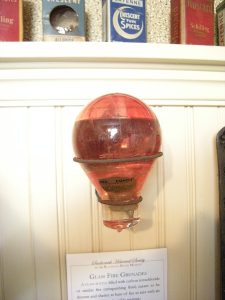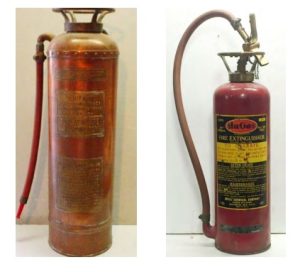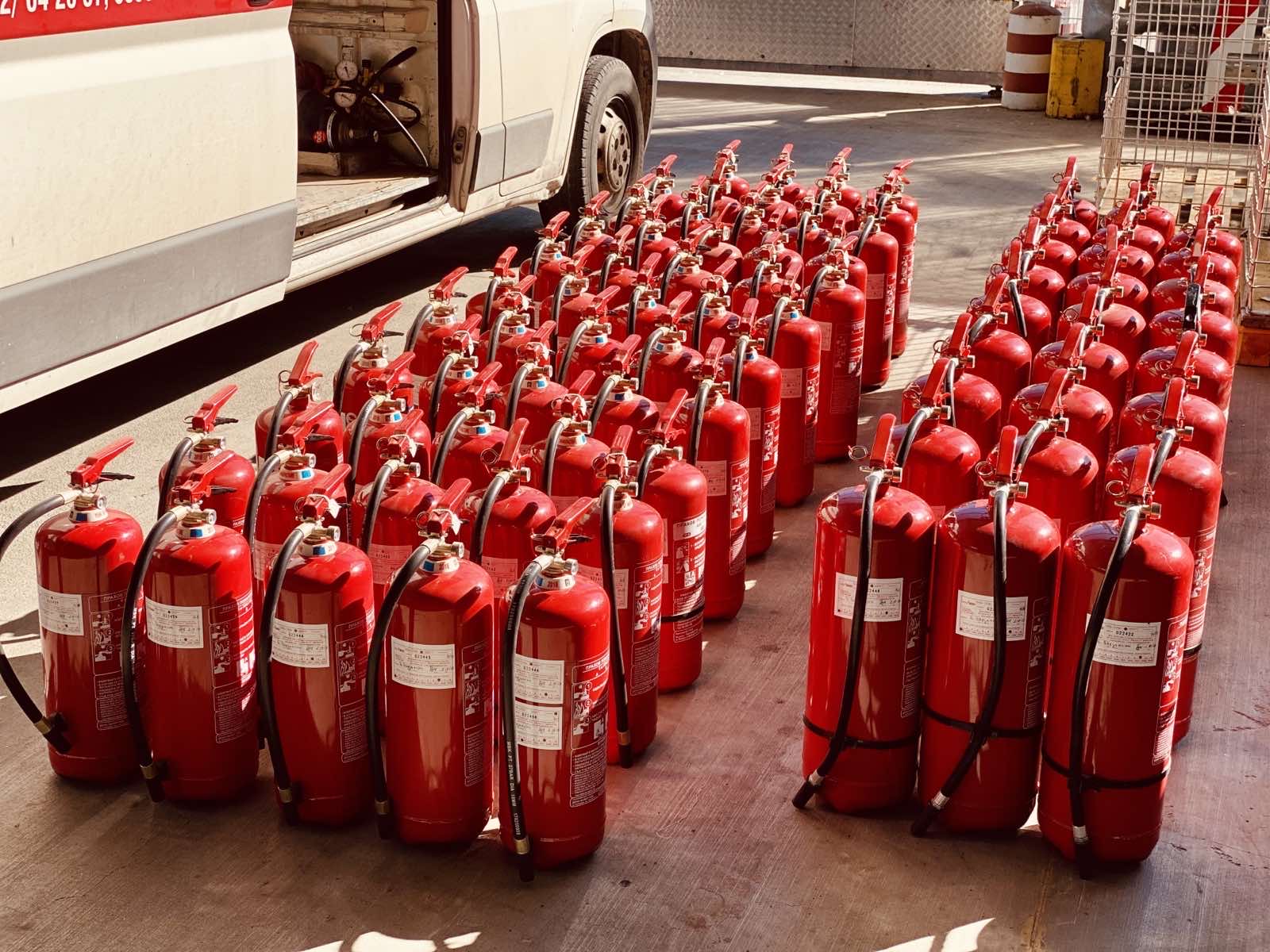The knowledge of proper and early firefighting did not always exist. There was a time when there were no warning alarms or fire retardant mechanisms, and people used various methods to fight fires. The first water pump was documented around 200 BC, invented by Ctesibius of Alexandria. This technology was revisited during the Middle Ages, when pumps resembling bicycles could transfer about a liter of liquid at a time.

History of the Fire Extinguisher
In the 15th century, Leonardo da Vinci was commissioned to create a large oven for the kitchen of the Duke of Milan for a major event at his home. This “super oven” was a system that transported dishes of food into an overheated oven. Da Vinci then installed a system to prevent potential fires, making it the first known sprinkler system in the world. In 1723, the first fire extinguisher was made by the English chemist Ambrose Godfrey, who patented it. He created a reservoir with firefighting liquid connected to a system containing a gunpowder chamber and fuses that were ignited, ejecting the gunpowder and dispersing the liquid.
In 1818, George William Manby invented the modern fire extinguisher. It consisted of a 13.6-liter copper container with a solution of potassium carbonate under compressed air. In 1866 in France, the acid fire extinguisher was patented by François Carlier. It mixed a solution of water and sodium bicarbonate with acetic acid, producing carbon dioxide. In 1881, Almon Granger registered in the United States a fire extinguisher that used the reaction of a solution of sodium bicarbonate and sulfuric acid contained in a flask inside the container, where carbon dioxide was produced by forcibly passing the water through a short tube.

In 1904, the foam fire extinguisher was invented by Alexander Loran, inspired by beer foam. This type of fire extinguisher was similar to the sodium bicarbonate type, with the main reservoir containing a solution of sodium bicarbonate and the inner flask a solution of aluminum sulfate. Mixing these two solutions propelled the foam from the device. These new fire extinguishers were more effective at slowing the spread of fire than the water fire extinguishers of that time and provided options for extinguishing fires involving flammable fuels, oils, and fats.
In 1910, a company in Delaware used carbon tetrachloride (CTC or CCl4) to extinguish fires, as the liquid evaporated and prevented the chemical chain reaction of burning. In addition to the small portable fire extinguisher, carbon tetrachloride was also used in another type of fire extinguisher, the fire grenade. It consisted of a glass sphere filled with this liquid, intended to be thrown at the base of the fire. These fire extinguishers were suitable for fires involving liquids and electrical fires but were withdrawn (in the 1950s) due to the toxicity of carbon tetrachloride. In 1928, DuGas introduced a fire extinguisher with a dry powder cartridge, using specially chemically treated sodium bicarbonate. Later, in the 1950s, the ABC fire extinguishing powder was discovered, followed by Super-K and Purple-K in the 1960s.
In the 1970s, fire extinguishers and fire extinguishing systems used halon, but their use was limited due to the serious environmental impact. New generations of fire extinguishers have not undergone significant changes in design, but the contents of the extinguishing agents have evolved to address various challenges in extinguishing fires of all types. Following developments and trends, we continually update our fire extinguisher models and fire extinguishing systems to offer the best, most effective, and environmentally friendly means of extinguishment.

Complete Range of Fire Extinguishers and Fire Suppression Systems from Deni Fire
Protect your home or business with the high-quality and innovative products and solutions for passive and active fire protection offered by Deni Fire. We provide all types of fire equipment, a complete range of fire extinguishers, fire suppression systems, fire alarms, and emergency equipment.
We value safety, that’s why we invest in quality!